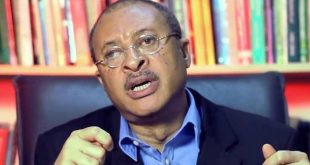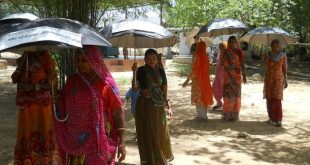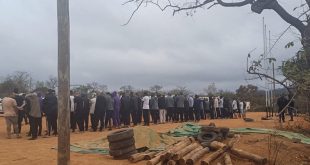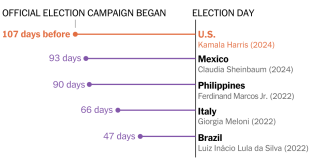CARACAS, Jan 31 (IPS) – Rural life in Latin America and the Caribbean continues to be marked by poverty and inequality compared to the towns and cities where the vast majority of the population lives. A new focus on rural life in the region could help reveal and address the challenges and neglect faced by people in the countryside.
“Many people in our countryside simply no longer have a way to live, without services or incentives comparable to those in the cities, producing less and for less pay, under the threat of more disease and poverty,” Venezuelan coffee producer Vicente Pérez told IPS.
In Mexico, whose countryside was home to 24 million of its 127 million inhabitants at the beginning of this decade, according to the World Bank, a study by the Economic Commission for Latin America and the Caribbean (ECLAC) showed that eight out of every 10 rural inhabitants lived in poverty, and six in extreme poverty.
It was in the Mexican capital where experts from ECLAC and the International Fund for Agricultural Development (IFAD) proposed this January “a new approach” to the concept of rural life in the region, to help public action to reduce inequality and contribute to the achievement of the Sustainable Development Goals (SDGs).
The project’s director, Ramón Padilla, told IPS from Mexico City that “we need a new narrative about rural Latin America that goes beyond the traditional static and dichotomous vision, and that sees rural areas not as backward places, but as territories with great potential for development and connections.”
Building a new narrative “is important for a better visualization, treatment and reduction of inequalities in income, infrastructure, education, health, gender, etc.,” added Padilla, head of ECLAC’s Economic Development Unit in Mexico.
“Those who have access to electricity, drinking water, communications and transport to work or school in a big city are at a great distance from life in many depressed rural areas,” said Pérez, executive director of the Venezuelan Confederation of Agricultural Producers (Fedeagro).
Entrenched rural poverty
Hilda, the head of her household in Los Rufinos, a village of 40 families in the middle of a sandy dry forest in the northwestern department of Piura, Peru, told visitors from the Argentina-based Latfem regional feminist communication network what it is like to live without electricity and drinking water, to cook with firewood and, among other hardships, to get her granddaughters the schooling she did not have.
In their dirt-floored houses with fences and walls made of logs, plastic and tin sheeting, the women in Los Rufinos cook in the early hours of the morning for the men of the village who go to work in the agro-exporting fruit plants in Piura, the departmental capital.
“When there is no moon, the night is really dark, you can’t see a thing. It’s not like in the city, where there is so much light,” Hilda commented to the Latfem representatives.
In Peru, a country of 33.5 million inhabitants (80 percent urban and 20 percent rural), 9.2 million people are poor, according to the government statistics institute. Poverty measured by income affects 24 percent of the urban population and 41 percent of the rural population, while extreme poverty affects 2.6 percent of the urban population and 16.6 percent of the rural population.
Farther north, in a rural area of the department of Cundinamarca in central Colombia, Edilsa Alarcón showed on the television program “En los zapatos de” (In the Shoes of), on the Caracol network, how she goes every day to two small fields near her home to milk four cows, her family’s livelihood.
She carries 18 liters of milk on the back of a donkey every morning, which she sells for 14 dollars, barely enough to live on. She owns no land and her biggest expense is renting pastureland for 860 dollars a year.
Colombia’s rural areas are home to 12.2 million people (51.8 percent men and 48.2 percent women), 46 percent of whom live in poverty, according to ECLAC.
“Gente de Guate”, produced by Guatemalan Youtubers , collects and delivers food, household goods and even cash for families in the countryside who barely scrape by in houses with four walls made of corrugated metal sheeting, boards and logs, wood stoves and a few chickens running around among corn and cooking banana plants.
Of Guatemala’s 17.2 million inhabitants, 60 percent live in poverty and between 15 and 20 percent in extreme poverty, according to figures from official entities and universities. Half of the population lives in rural areas, where poverty affects two thirds of the overall population – and 80 percent of indigenous people – and extreme poverty affects nearly one-third of the total population.
Regional data
Some 676 million people live in Latin America and the Caribbean, of whom 183 million are poor (29 percent), and 72 million are in extreme poverty (11.4 percent), according to ECLAC data for 2022 and 2023.
While 553 million people (81.8 percent) live in towns and cities, 123 million (18.2 percent) live in rural areas. And while in urban areas poverty stands at 26.2 percent and extreme poverty at 9.3 percent, in rural areas 41 percent of the inhabitants are poor and 19.5 percent are extremely poor.
Gender inequality also persists, stubbornly. One figure that reflects it is that only 30 percent of rural women (58 million) have access to some form of land ownership, their jobs are often more precarious and less well paid, and at the same time they spend more time on household and family care tasks.
Time to migrate from the countryside
Latin America has experienced a massive exodus from rural to urban areas in the 20th century and so far in the 21st. “In 1960, less than half of the region’s population lived in cities. By 2016 that proportion had risen to over 80 percent,” wrote Matías Busso, a researcher at the Inter-American Development Bank (IDB).
This process, driven by the search for better employment opportunities and living conditions, first fueled the expansion of the region’s major cities – to form megalopolises such as São Paulo and Mexico City – and more recently migration to foreign destinations, such as the United States.
The largest migratory phenomenon abroad that the region has known, the exodus of more than seven million Venezuelans in the last decade, has involved numerous urban and suburban inhabitants, but also people from many rural areas.
Pérez said that, in addition, in countries like Venezuela there is now a tendency to move from the countryside to urban areas, “but not to the big cities, like Caracas or Maracaibo, but to nearby towns or small cities, maintaining their ties to the plot of land where the family has crops or a few animals.”
“New shantytowns form in small towns next to agricultural areas, such as coffee plantations in the Andes (southwest) or grain fields in the (central) Llanos, and people work for a few days in some urban job and then return to the countryside at the weekend. A sort of double life,” said Pérez.
Seeking a new narrative
New realities such as these prompted the ECLAC-IFAD initiative to “overcome the traditional view that contrasts rural and urban areas, recognizing the existence of different degrees of rurality in the territories and greater interaction between them,” according to its advocates.
“The project seeks to replace the dominant narrative – which is reductionist and marginalizing – of rural areas as static and backwards, with one that recognizes the challenges and opportunities of today’s new rural societies,” said Peruvian economist Rossana Polastri, regional director of IFAD.
The basis of the initiative is that between what is defined as rural and urban – the limit in countries such as Mexico is to consider urban areas as those with more than 2,500 inhabitants and rural areas as those below that level – there is a variety, degree and wealth of possibilities and opportunities to address issues of equity and development.
Padilla from Mexico said that a first element of the work they propose is to collaborate with the public bodies in charge of designing and implementing policies for rural areas, since “technical work, well grounded in concepts and theories, has to go hand in hand with a dialogue with the public sector.”
“A second element is continuous dialogue with the communities. The new understanding has to be translated into participatory solutions, in which each community and each territory creates a new vision, a renewed plan for sustainable development,” said the head of the project to build a new approach to rural life in Latin America.
© Inter Press Service (2024) — All Rights ReservedOriginal source: Inter Press Service
 Top Naija News – Nigeria News, Nigerian News & Top Stories Top Naija News – Nigerian Newspapers, Nigerian News. topnaijanews is a daily Nigerian newspaper covering Latest News, Breaking News, Entertainment, Sports, Lifestyle and Politics.
Top Naija News – Nigeria News, Nigerian News & Top Stories Top Naija News – Nigerian Newspapers, Nigerian News. topnaijanews is a daily Nigerian newspaper covering Latest News, Breaking News, Entertainment, Sports, Lifestyle and Politics.




